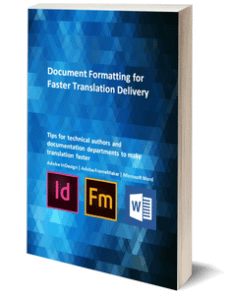
Overview
Dynamic Linking works like a multilingual concordance search. It displays all the segments which contain particular pairs of terms. This quickly and easily provides you with an overview of where, and in what context a source-language term and its translation are used.
You can use Dynamic Linking also if only a source language term exists.
Compared to the static recording of examples in a dictionary, Dynamic Linking has the following advantages:
- Subject
Dynamic Linking displays examples found in the currently used reference material, i.e. the project/subject the translator is working on.
The same term might have been translated differently in different projects: Example: English driver – German Fahrer or Treiber.
- Context
Dynamic Linking displays examples embedded in the context of the segment they appear in.
A term on its own does not indicate a meaning as it lacks context. Example: Motor in German = motor or engine in English
- No terminology maintenance effort
Dynamic Linking does not require additional terminology maintenance effort because examples do not need to be added to the dictionary but are created dynamically when Dynamic Linking is called up.
Examples in a dictionary requires great maintenance effort and may soon become obsolete.
- Reduced database sizes
Dynamic Linking reduces the size of dictionary databases as the dictionaries do not need to contain the examples.

As Dynamic Linking searches the reference material for terms or pairs of terms, this function only makes sense if you are working in a Transit project that contains reference material.
5.11.2 Calling up Dynamic Linking
There are several possibilities for calling up Dynamic Linking. This means that Transit provides the ideal solution for every situation.
- From the Terminology window
- From the dictionary itself
- From the Transit-toolbar context menu
Transit displays the search results in the Dynamic Linking window (fig. 5-73). Please refer to section 5.11.3 “Dynamic Linking results” for more detailed information on this topic.

1 Position the mouse pointer over the resource bar and right click. Select the Dynamic Linking tool from the context menu.
Transit displays the Dynamic Linking window (fig. 5-73).
2 In the Source language and/or Target language fields, enter the term in the source and/or target languages which you want to search for using Dynamic Linking and click Search.
If you want to use morphological search, please enter the base form of the term.
Transit displays the Dynamic Linking window, containing the search results (fig. 5-73). Please refer to section 5.11.3 “Dynamic Linking results” for more detailed information on this topic.

1 If Transit is displaying dictionary suggestions for the current segment, double-click on the symbol to the left of the corresponding entry. This is the fastest way of opening Dynamic Linking for a term or pair of terms.
Alternatively you can open the context menu in the Terminology window by right-clicking on the dictionary entry in question.
Transit displays all the terms or the pairs of terms for which you can call up the Dynamic Linking feature:
Fig. 5-71: Calling up Dynamic Linking from the Terminology window
2 Select the term or pair of terms for which you wish to call up Dynamic Linking.
Transit displays the Dynamic Linking window, containing the search results (fig. 5-73). Please refer to section 5.11.3 “Dynamic Linking results” for more detailed information on this topic.

1 Click on the TermStar tab.
2 Select the data record for which you wish to call up Dynamic Linking, and then open the context menu.
TermStar NXT displays the terms or pairs of terms in the submenu Dynamic Linking:
Fig. 5-72: Calling up Dynamic Linking from the dictionary
3 In the submenu, select the term or pair of terms for which you wish to call up Dynamic Linking.
TermStar NXT displays the Dynamic Linking window, containing the search results (fig. 5-73). Please refer to section 5.11.3 “Dynamic Linking results” for more detailed information on this topic.
5.11.3 Dynamic Linking results
After you have called up Dynamic Linking (see section 5.11.2 “Calling up Dynamic Linking”), Transit starts searching and displays the search results in the Dynamic Linking window. Transit displays the matches, starting with the most similar match:
Fig. 5-73: Dynamic Linking window with search results
The matches contain the following information:
- First line – Similarity of match and name of the file in which the text was found.
- Second line – Source language and source-language segment (with highlighted search term, where applicable).
- Third line – Target language and target-language segment (with highlighted search term, where applicable).
If necessary, you can use the context menu to open the reference file so you can view the context of the match.
If you no longer require Dynamic Linking, you can close the window by clicking on X on the right of the titlebar.
It is also possible to integrate the Dynamic Linking window with the user interface by docking it (for information on this, see the instructions under “How do I dock a standard window with the user interface?” in section 2.1.8 “The Transit toolbar”).

In the Source language and Target language lists, Transit shows all the terms which you have searched for with Dynamic Linking since starting Transit.
If you want to search again for a term that you have already entered, simply select it from the Source language or Target language list and click on Search. This feature is very helpful if you want to use different settings for different terms.
5.11.4 Settings for Dynamic Linking
In the Dynamic Linking window, you can define various settings (see figure 5-73). Clicking Options takes you to the Dynamic Linking user preferences. From there you can configure additional, project-independent settings. You can find more detailed information on this in the section5.11.5 “Dynamic Linking – User preferences”.
- Minimum quality – Specify how similar the search term and the text in the segments should be in the source and target language. You can use this setting to define how similar matches should be.
- Phrase search – Select this option if you want Transit to search segments for text which is a 100% match for the search string.
The following table uses examples to explain the difference between a word search and phrase search:
Tab. 5-18: Examples of word and phrase searches
- Source language – Enter the source-language term here which you want Transit to search for.
If you only want Transit to search in the target language, leave this field empty and only enter text in the Target language field.
- Target language – Enter the target-language term here which you want Transit to search for.
If you only want Transit to search in the source language, leave this field empty and only enter text in the Source language field.
- Morpho search – Select this option if you want Transit to take morphological criteria into account for Dynamic Linking. To do this, enter the base form of the term into the Source language and/or Target language fields. Transit will then also search the language pairs for conjugated and inflected forms.
- Match case – If you want Transit to take account of case differences for Dynamic Linking.
- Include all languages – This option is only available if you call up Dynamic Linking from TermStar NXT (see fig. 5-72).
Select this option to determine whether TermStar NXT should only take the current source and target language into account for Dynamic Linking, or whether it should consider all languages for which there are entries in the data record and reference material.
The following table shows the impact this option has for Dynamic Linking. We have used the term pair database/Datenbank as an example:
Tab. 5-19: Examples of including all languages in the search
– Include all languages in the search (Include all languages selected):
TermStar NXT also compares the French entry base de données in the data record with the text of the segments. As the sample segment 2 contains another term (banque de données), this segment does not match the data record entries for all languages. Dynamic Linking does therefore not display segment 2 but only the sample segment 1.
– Do not include all languages in the search (Include all languages not selected):
TermStar NXT only compares the German and the English entry with the text of the segments. As these terms also appear in sample segment 2, the segments match the data record in the source and target language. Therefore, Dynamic Linking displays sample segment 1 and sample segment 2.
If TermStar NXT is unable to find any matches solely because ‘Include all languages’ is checked, Transit displays the following message in the results window:
Please uncheck ‘Include all languages’ and try again.
With the option unchecked, TermStar NXT would be able to find matches. If you want to display these matches, please uncheck Include all languages and search again by clicking Search.
5.11.5 Dynamic Linking – User preferences
The Dynamic Linkung user preferences can be opened
– by clicking Options in the Dynamic Linking window,
– by selecting Terminology | Dynamic Linking | Options in the ribbon bar.

Fig. 5-74: User preferences window, Dynamic Linking screen
The user preferences for Dynamic Linking are the same as for Dual Concordance (e.g. language pairs to be searched, minimum segment status) (see section 5.10.3 “Dual Concordance – User preferences”).
Document Formatting for Faster Translation Delivery








